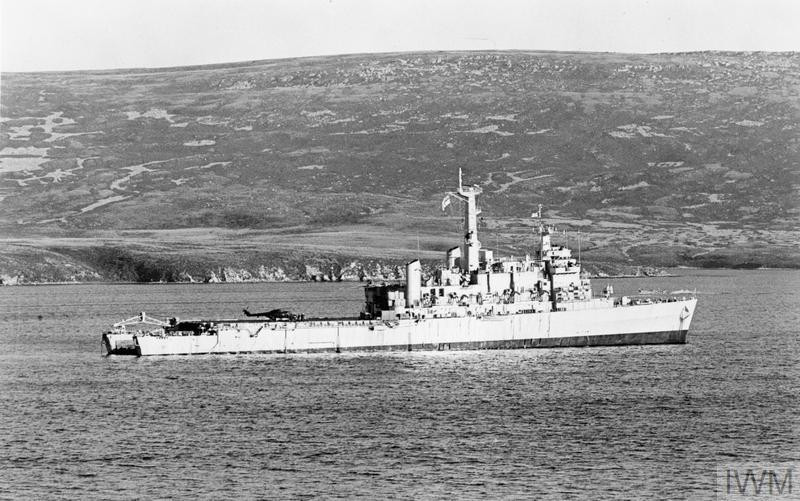Argentine pilots made one more bid to sink a British aircraft carrier with the last of their five air-launched Exocet missiles on Sunday 30 May 1982.
Two Super Etendard aircraft, from the Rio Grande base in Argentina refuelled en route, flew in from the south of the carrier group, east of the Falkland Islands; one carried the missile while the other flew in a radar support role.
The Exocet was released around 20 miles from the carriers, flagship HMS Hermes and the more modern HMS Invincible.
Following the Super Etendards in were four Skyhawks to press home the attack with bombs.
But the Exocet’s on-board radar picked up HMS Avenger on its internal radar system, and as it bore down on the Type 21 frigate it was deceived by clouds of chaff and the missile splashed harmlessly into the sea, passing between destroyer HMS Exeter and Type 21 frigate Avenger
Although the Etendards escaped, two of the Skyhawks were brought down, one by a Sea Dart missile from Exeter and the other by Exeter’s second Sea Dart or a 4.5in shell from Avenger’s main gun.
The other two Skyhawks aimed their bombs at Avenger, but missed – although subsequent reports in the Argentinian press spoke of a successful attack on Invincible, which was steaming on unharmed some miles away from Avenger.
Around the same time as the Exocet was fired towards the carriers, assault ship HMS Fearless arrived back in San Carlos Water, having steamed eastwards three days previously to rendezvous with destroyer HMS Antrim far out to sea.
Fearless brought with her Gen Jeremy Moore RM, who assumed the role of Commander Land Forces for the remainder of the Falklands campaign.
When Brig Thompson returned to San Carlos from Teal Inlet to meet his commander, final plans could be made to receive the 5th Infantry Brigade, put 2 Para under Brig Wilson's command, and move 3 Cdo Bde HQ to Teal Inlet, on Salvador Water, around 30 miles from Stanley.
Meanwhile Royal Marines continued to advance eastwards towards Port Stanley, reaching Douglas Settlement and Teal Inlet on Salvador Water, a large bay to the west of Stanley.
An Argentine Army Puma helicopter was lost near Mount Kent on 30 May, possibly to fire from friendly forces.
County-class destroyer HMS Antrim moved off from the carrier group towards South Georgia to help protect STUFT (ships taken up from trade) vessels following the bombing of tanker British Wye the day before.
One British aircraft was lost on 30 May – a Harrier GR3 of RAF 1 Sqn on a bombing mission over Port Stanley was hit by small arms fire which punctured fuel tanks. With fuel leaking from the tanks it ran out of fuel some 30 miles away from HMS Hermes and ditched into the sea, with the pilot escaping safely to be picked up shortly afterwards.
Today’s image from the Imperial War Museum collection (© IWM FKD 181) shows assault ship HMS Fearless in San Carlos Water, ‘flooded down’ for landing craft operations.
* These posts can only give a brief sense of what was a complex and fast-moving situation 40 years ago, and cannot cover the involvement of every ship, squadron and unit in detail – for a much more comprehensive account see the Falklands section of naval-history.net at https://www.naval-history.net/NAVAL1982FALKLANDS.htm
The Royal Naval Association is the biggest collective group of Royal Naval veterans and serving personnel, with more than 270 branches in the UK and overseas.
The RNA provides those with a link to the Royal Navy access to a life-long community of like-minded and supportive individuals.
Our community provides companionship, resilience, comradeship and unity to anyone and everyone with a Naval story, supporting them through life's highs and lows.
Membership is now free (please note, some branches may charge a small annual subscription, payable locally on their request) – see https://royal-naval-association.co.uk/join-us/ for details of how to join.
